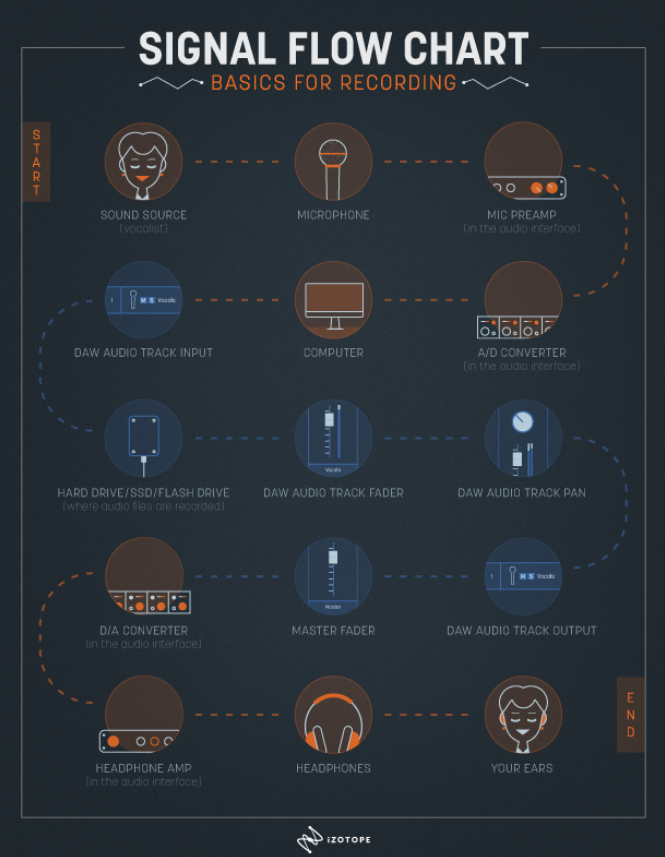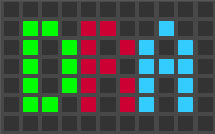Signal Chain
The bare minimum physical hardware components you will need are as follows. Please note: I didn't go into specific brand name devices for several reasons. Some brands of hardware are computer operating system specific. There's also a lot you can learn by researching what brands perform best at specific tasks, and determining how that will impact what you imageine as your future approach to audio recording.

| Device | Purpose |
|---|---|
| Computer: | For all intents and purposes, this is your recording device. This is the tool that has replaced magnetic tape. All audio will be stored to your computer as files. |
| Interface: | There's something called AD/DA conversion. AD stands for "analog to digital", and DA stands for "digital to analog". An interface is the device that will perform these functions for you. The reality is: computers speak binary (digital), and don't know what sound (analog) is, or how to represent it to humans. The interface will translate the sounds (analog) you are recording into binary (digital) so that the computer can store it. The interface will also convert this binary (digital) back into sound (analog), so that you can interpret and manipulate it. It's possible to get a stand alone DA converter if you plan to compose all of your music "in the box" (in the computer) and have no need to record real instruments or voices. Though, I wouldn't recommend this, because you can have a lot of fun recording real sound, and then manipulating it to create original sounds and effects. |
| Microphones: | The device which will receive the (analog) vibrations and interpret them into an alternating current sine wave. You will need this only if you plan to record real instruments or voices. |
| Monitors: | You will need some type of monitor to play back any music composed in your DAW (digital audio workstation). Headphones are not recommended for this purpose as they do not properly represent real world playback environments. It is recommended that, when you are mixing, you mix in a real space (not headphones) like a room, and that you have a few different monitors with different natural frequency responses to get the best results with your mix. |
